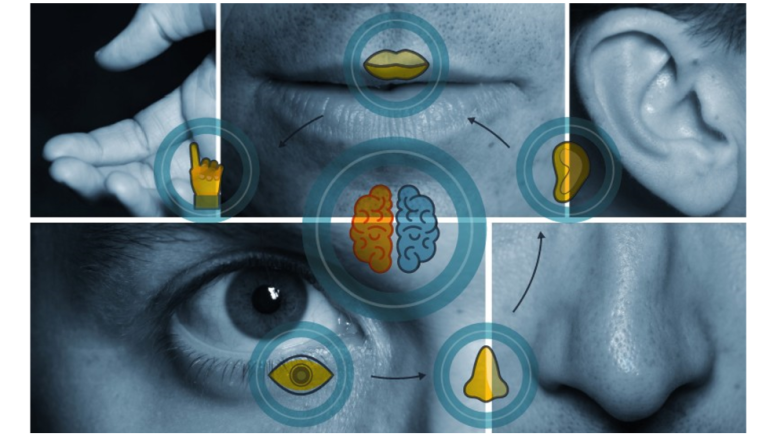Imagine stepping into a luxury car dealership. As you walk in, you’re greeted by the subtle aroma of fine leather and a faint hint of a high-end cologne. The soft touch of the steering wheel under your fingers feels reassuringly smooth. The gentle hum of the showroom’s ambient music creates a calming backdrop as you explore the latest models. Suddenly, a car catches your eye. You slide into the driver’s seat, and as your fingers trace the intricate stitching on the upholstery, you feel an almost magnetic pull toward this vehicle. You’re not just thinking about the car; you’re experiencing it.
This is the power of sensory marketing, a technique rooted in the principles of neuromarketing. By engaging multiple senses, brands can create a more profound and lasting impact on consumers. Neuromarketing’s insights into how our brains process sensory stimuli have revolutionised the way companies approach marketing, making it an essential strategy in today’s competitive landscape. In this article, we will explore the top five nuances and technical aspects of sensory marketing, illustrated with real-world examples from global brands.
- The Science of Scent: Engaging the Olfactory Sense
The olfactory sense is directly connected to the limbic system, the part of the brain responsible for emotions and memory. This connection makes scents particularly powerful in evoking memories and emotions.
Scent marketing leverages this connection by using specific fragrances to create a desired emotional response. This technique can enhance brand recognition and customer loyalty.
For instance, marketers would know that Singapore Airlines is renowned for its use of scent marketing. The airline developed a signature scent, a blend of lavender and citrus, which is infused into hot towels and diffused throughout the cabins. This distinctive scent creates a memorable and consistent brand experience, reinforcing the airline’s identity and providing a sense of comfort and luxury to passengers.
- The Power of Sound: Crafting Auditory Experiences
Sound waves influence the brain’s auditory cortex and can significantly impact mood and behaviour. Different frequencies and rhythms can elicit various emotional responses.
Sound branding involves creating auditory elements, such as jingles or ambient music, that resonate with a brand’s identity and enhance the customer experience.
Example: McDonald’s iconic jingle, “I’m Lovin’ It,” is a prime example of sound branding. This catchy tune is instantly recognisable and evokes positive emotions associated with the brand. Additionally, Starbucks uses curated playlists in their stores to create a welcoming and relaxed atmosphere, encouraging customers to linger and enjoy their experience.
- Visual Impact: The Influence of Imagery and Color
Visual stimuli are processed in the brain’s occipital lobe, where colours, shapes, and images are interpreted. Different colours can evoke specific emotions and associations.
Visual marketing strategically uses colours, imagery, and design elements to convey a brand’s message and influence consumer perceptions.
Example: Coca-Cola’s consistent use of red and white in its branding is a powerful visual strategy. The colour red is associated with excitement and energy, which aligns with the brand’s image. Additionally, Apple’s minimalist design and sleek product imagery create an impression of sophistication and innovation, reinforcing its brand identity.
- Tactile Engagement: The Sense of Touch
The sense of touch is processed in the somatosensory cortex, which can trigger emotional responses and influence perceptions of quality and value.
Tactile marketing involves designing products and packaging that feel good to touch, enhancing the overall customer experience.
For instance, Lush, a cosmetics brand, excels in tactile marketing. Their products are designed to be touched and handled, with textures that are pleasing to the senses. From the velvety feel of their bath bombs to the smoothness of their lotions, Lush creates an engaging sensory experience that encourages customers to interact with their products.
- Taste and Marketing: The Gustatory Connection
Technical Aspect: Taste is closely linked to both smell and memory, making it a potent tool for creating memorable experiences.
Taste marketing often involves offering samples or creating flavours that evoke positive associations and reinforce brand identity.
Example: Ben & Jerry’s has mastered the art of taste marketing. By offering free samples of their unique and indulgent ice cream flavours in stores, they create a memorable experience that encourages purchases. The brand’s quirky flavour names and rich taste profiles further enhance their identity and customer loyalty.
The Future of Sensory Marketing
As neuromarketing continues to evolve, the integration of sensory marketing techniques will become increasingly sophisticated. By understanding the nuanced ways in which different senses interact with the brain, brands can create more immersive and impactful experiences.
By leveraging the insights provided by neuromarketing, brands can craft strategies that resonate on a deeper emotional level, ensuring their message is not only seen and heard but also felt and remembered.
The views and opinions published here belong to the author and do not necessarily reflect the views and opinions of the publisher.



Be the first to comment on "The Symphony of the Senses – Unveiling Neuromarketing’s Role in Sensory Marketing"